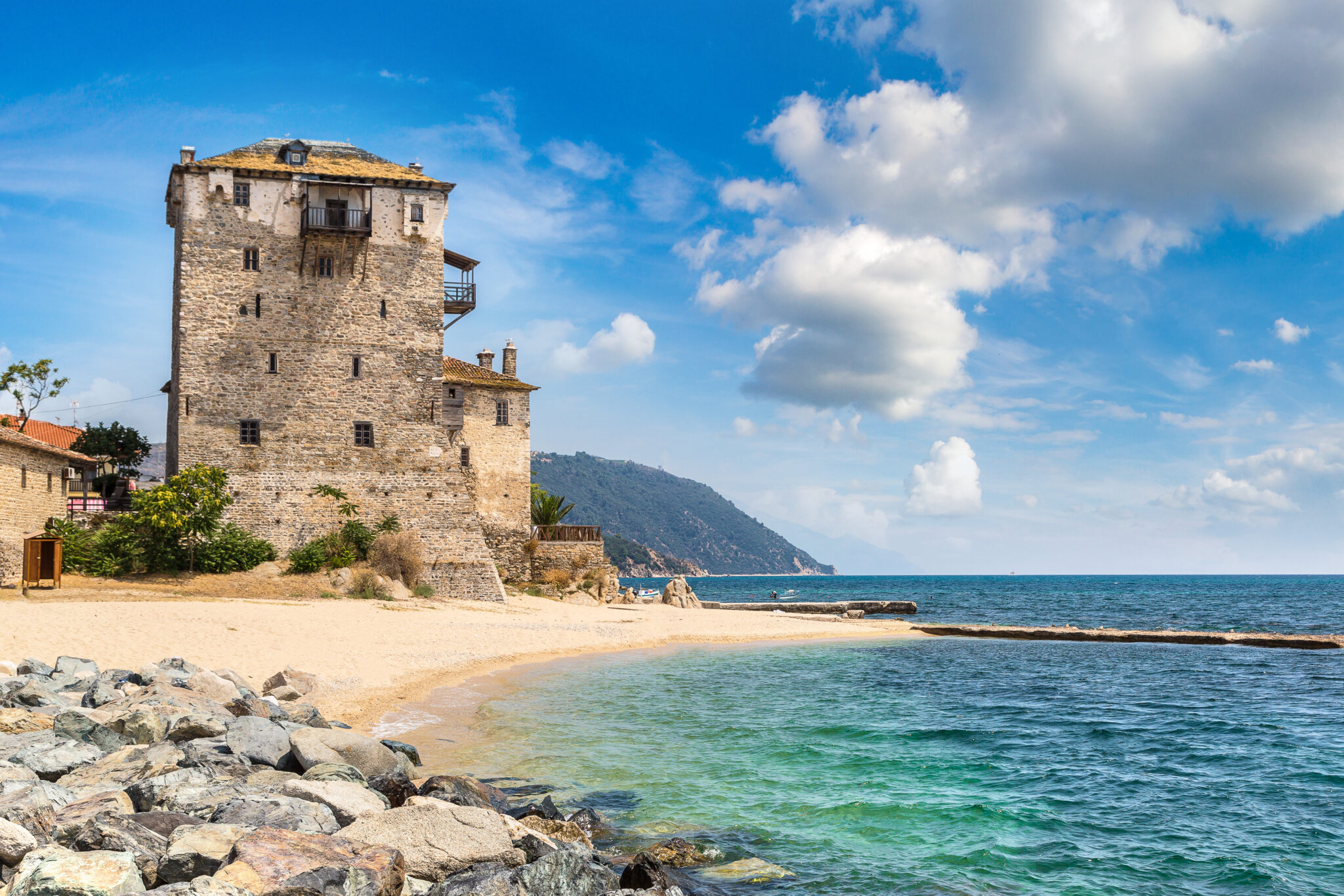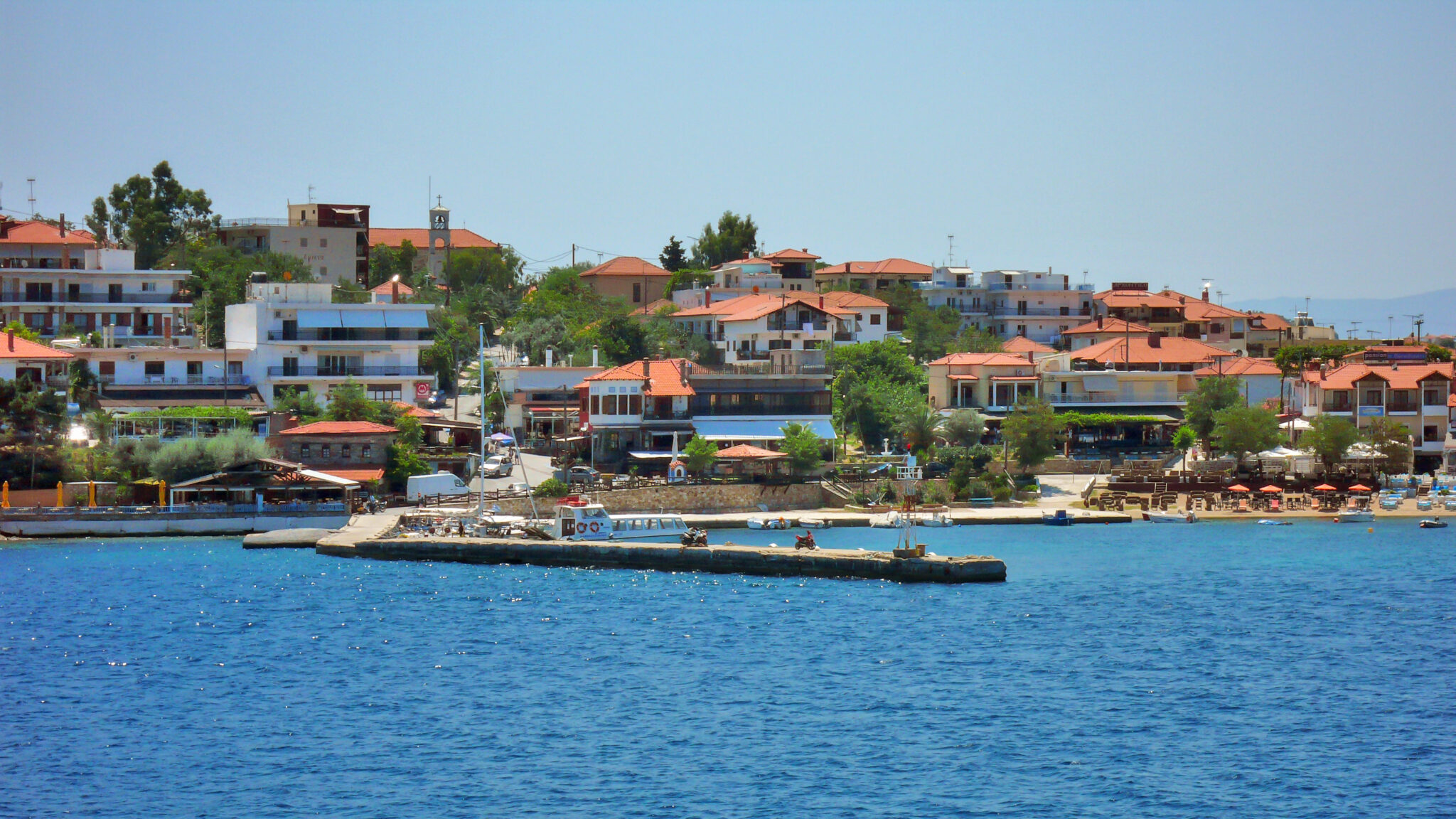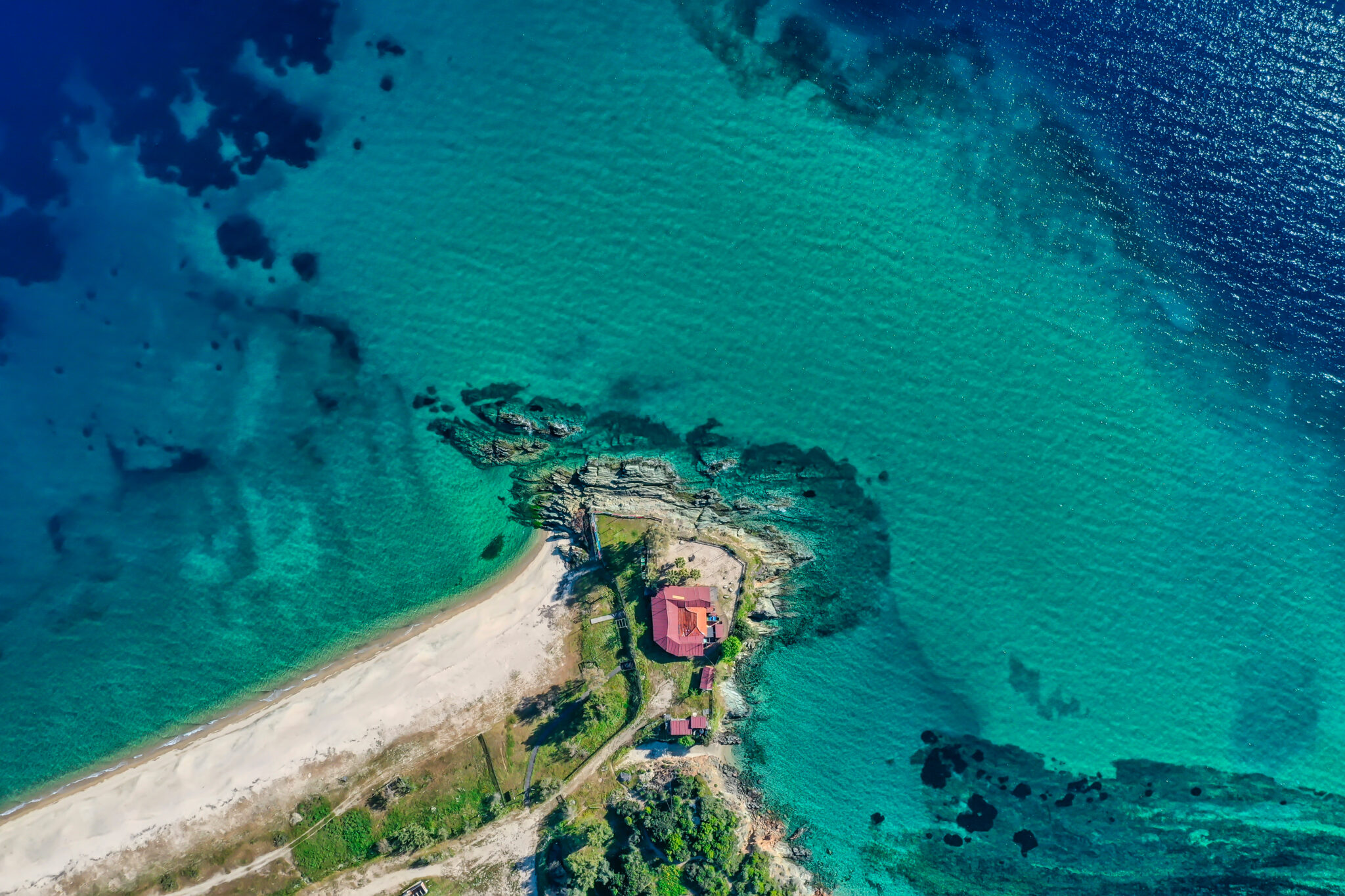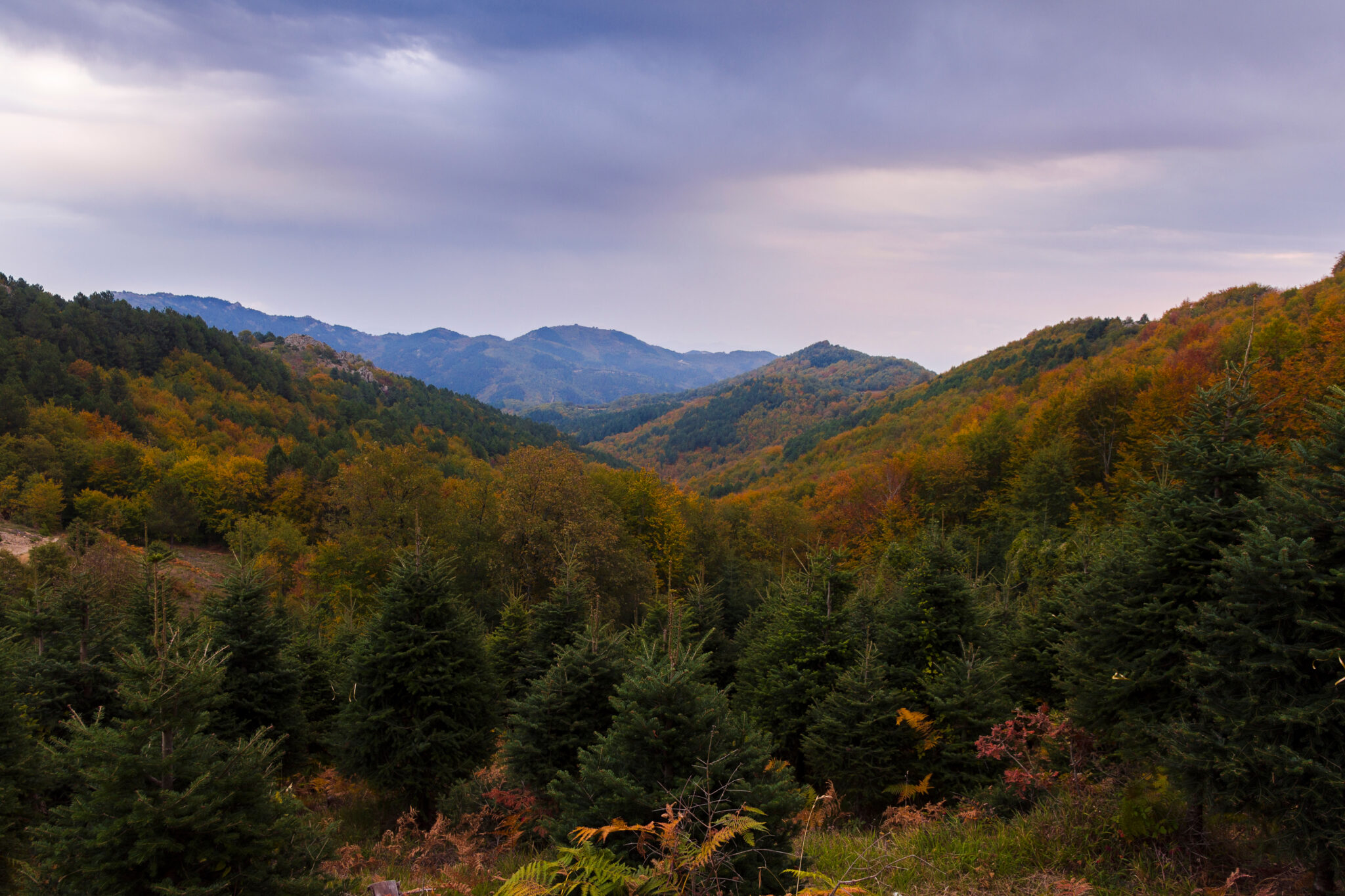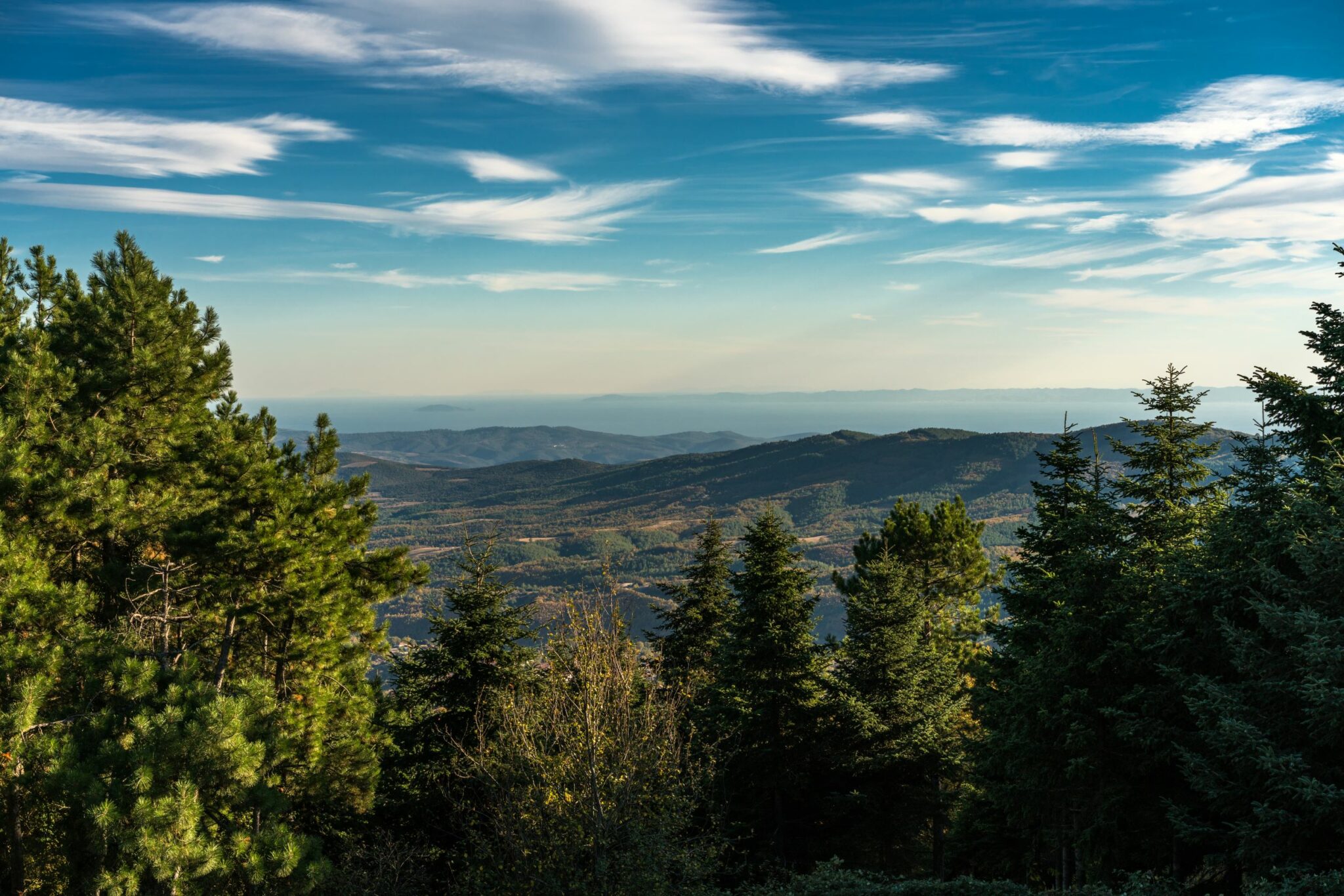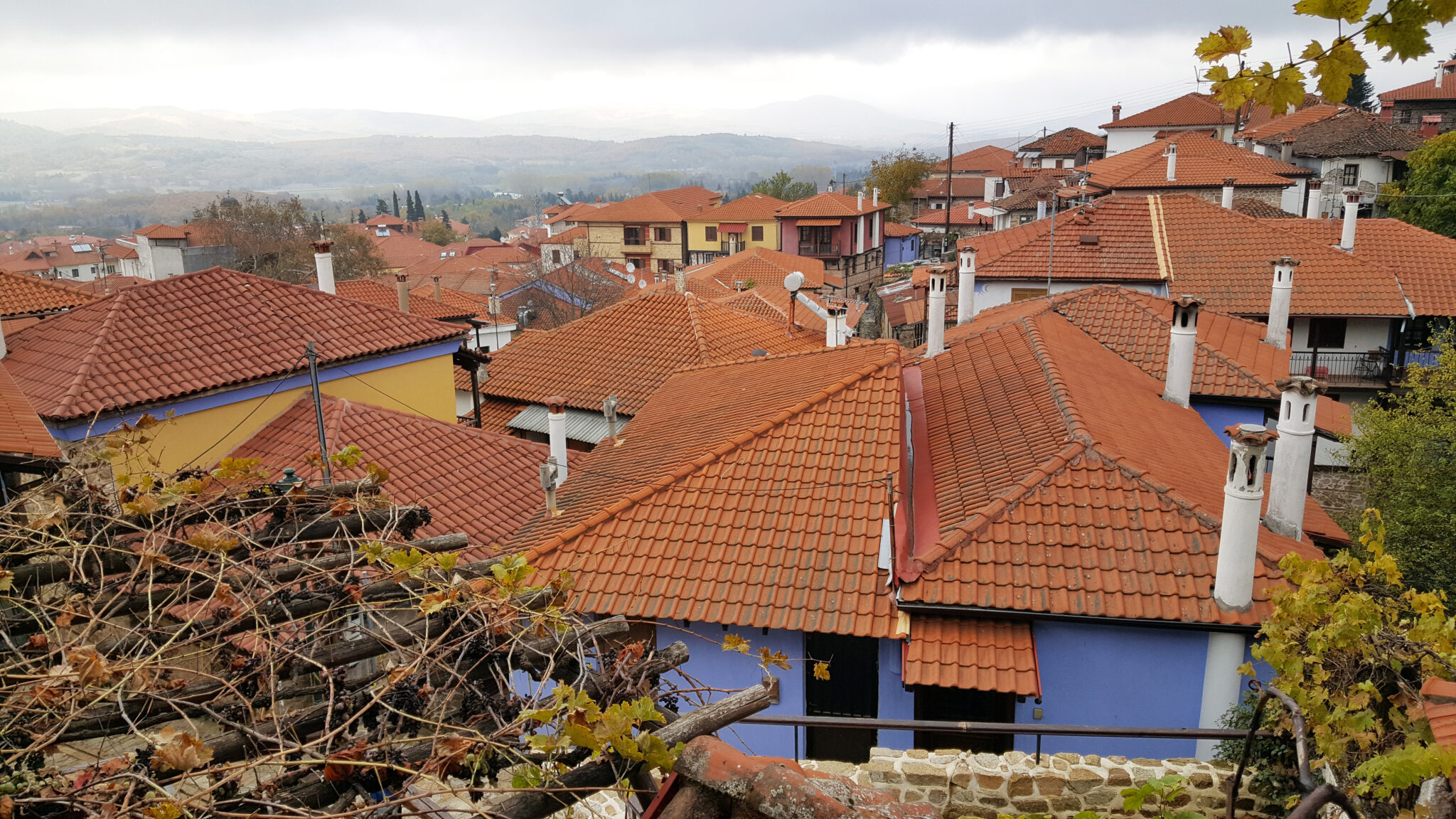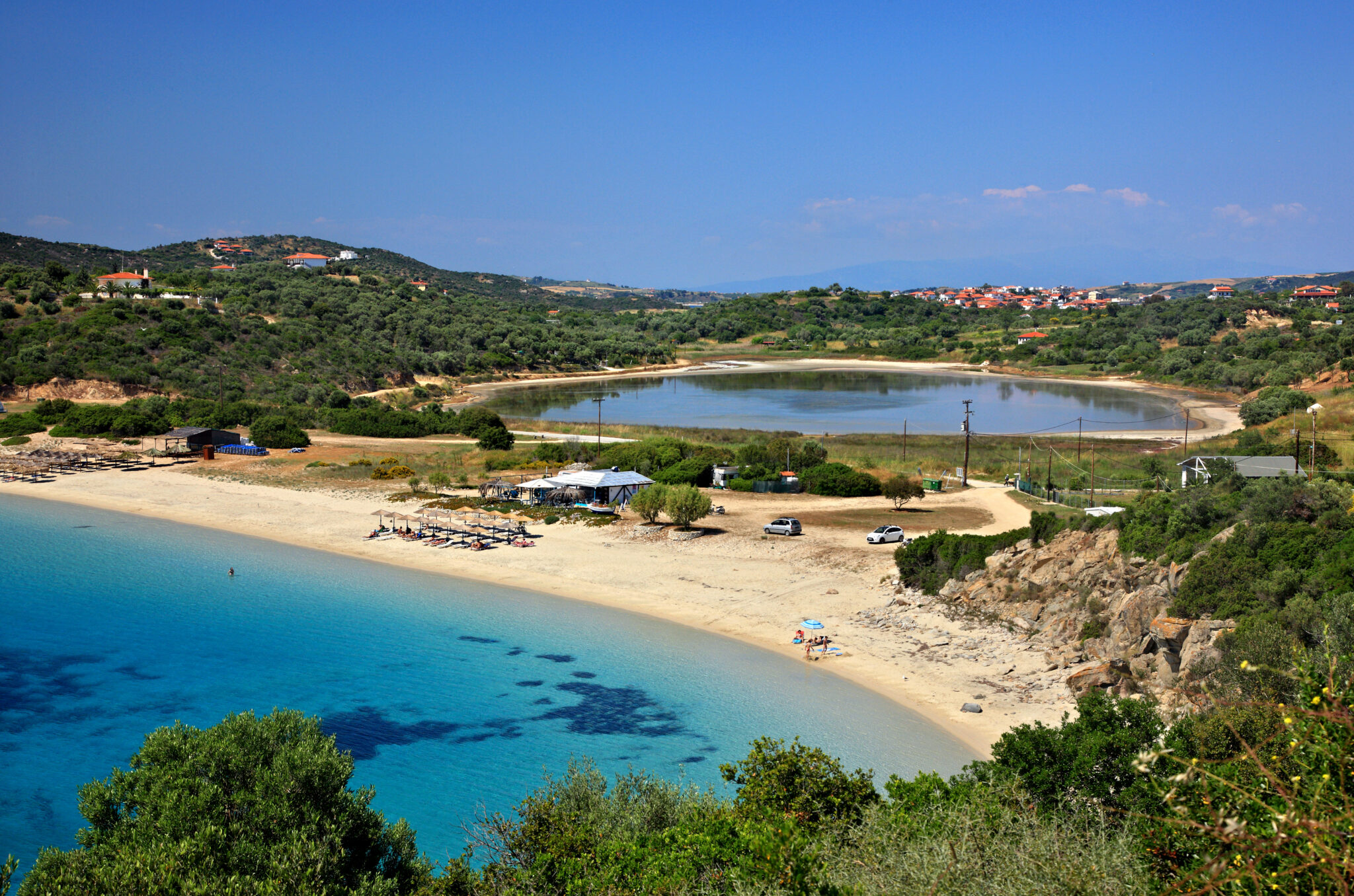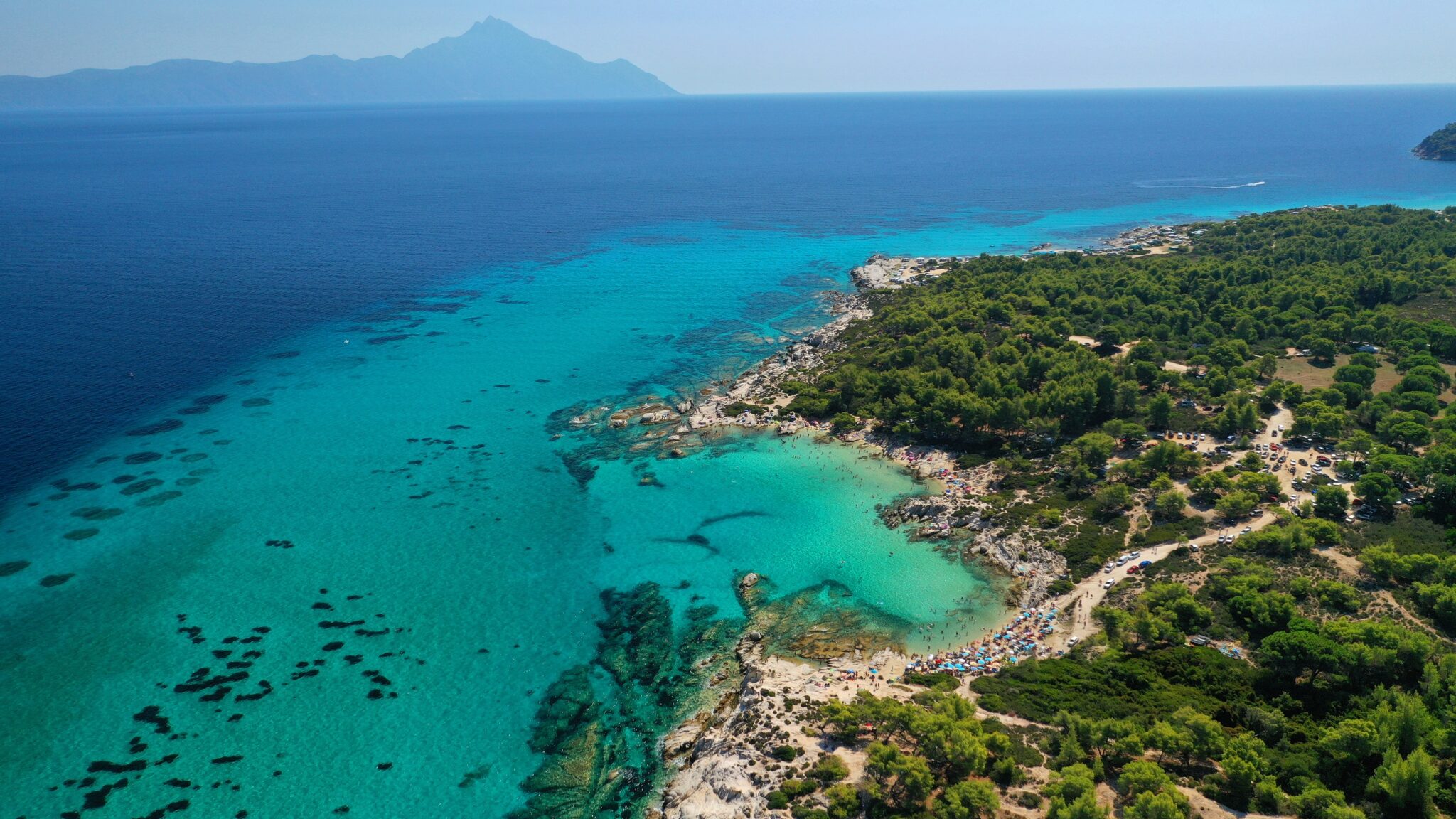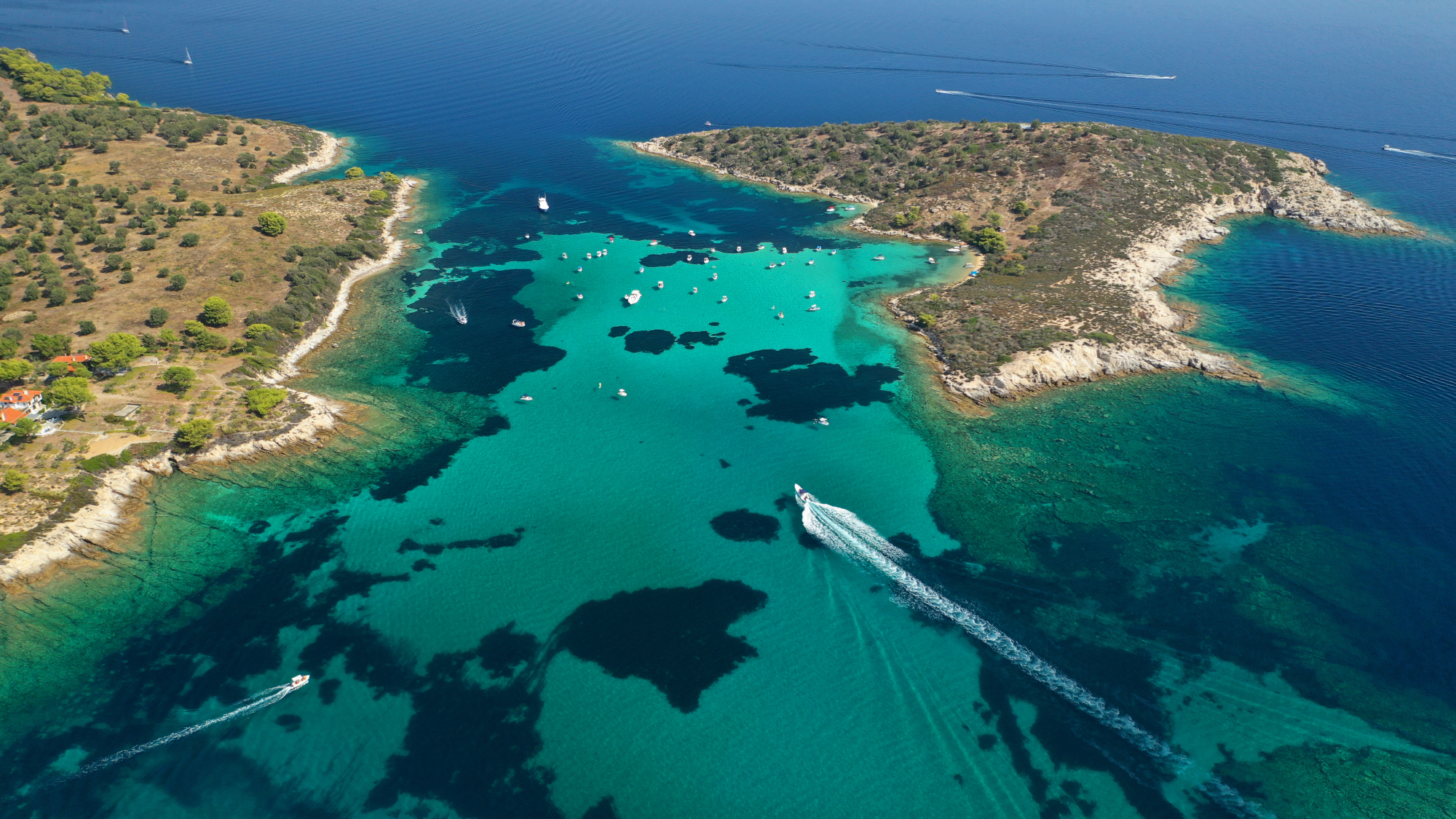Although I’m uncertain if the sea is the sole source of my fascination, I am consistently captivated by the unexplored and unconventional facets of a destination, particularly its rugged and lesser-known mountainous areas. I am convinced that it is within these hidden treasures that the authentic character of a place, its core values, and the profound sentiments of its inhabitants are uncovered.
My experience in Halkidiki is a testament to this, where before being fully captivated by its coastal beauty, I had the chance to discover Mount Holomontas. This verdant mountain dominates the peninsula with an altitude of over 1,100 meters, boasting picturesque mountain villages and unforgettable local cuisine.
As I traveled inland, I couldn’t help but fall in love with the ancient oak trees and the thousands of towering firs that blanket the slopes of Holomontas. The charming stone-paved pathways in the villages and the vibrantly colored houses showcasing Macedonian architecture also captured my heart. I adored the wooden “sachnisia”, or covered balconies, extending from each living room to maximize sunlight exposure, boldly protruding as they sought to steal some of northern Greece’s precious light.
In a quaint café tucked beneath a sachnisi, I savored a pan of red mushrooms and sampled moudovina, a local honey-infused tsipouro, for the first time.
My journey led me to Taxiarchis, a picturesque settlement nestled in the heart of the mountain. Here, a remarkable biodiversity university forest has been established to educate foresters from the Aristotle University of Thessaloniki.
At a classic café in the small square, aptly named “The Meeting”, I enjoyed a delightful culinary experience. Beginning with potato omelettes and a refreshing salad, the meal culminated in a plate of succulent local grilled meats. The perfect meeting of flavors, this experience was made all the sweeter by a spoonful of cherry dessert, a delightful surprise that further enriched my time in this enchanting mountainous region.
Mount Holomontas is home to not only firs and oak trees but also picturesque vineyards and a winery. Early in the morning, we headed to Arnaia. At the Estate of Klavdia Papagianni, we recalled our first visit years ago when the winery had just started operating. We remembered the unique experience of tasting wines from new vineyards and identifying their distinct characteristics. A decade later, we enjoyed a refined rosé made from Grenache Rouge, with hints of Provence and a Halkidiki character, highlighting the importance of terroir.
Ormilia and the fertile plain
Halkidiki is more than just beaches and mountains; it also has fertile and productive plains. Between the first and second “legs” of the peninsula, the Monastery of Ormilia stands as a significant women’s monastery. This Holy Convent of the Annunciation is an Athonite dependency with a long history, now home to multitalented and progressive nuns who believe that every monastery is a piece of heaven on Earth.
We were welcomed by a lush olive grove and a variety of fruit trees. Their table olives live up to the reputation of Halkidiki olives, and their olive oil was fragrant even months after the harvest. Later, we visited Vrastama to take in more beautiful scenery.
On Halkidiki’s island
We intentionally left out Halkidiki’s famous beaches on all three “legs” of this journey. Instead, we focused on the charming island of Ammouliani, just 15 minutes from Tripiti. In the Bay of Mount Athos, this island – once a dependency of the Vatopedi Monastery and later divided among refugees – is a small paradise, especially in spring when tourism is at reasonable levels. Our visit was complete with refreshing dips in the waters of Karagatsi and a satisfying meal of grilled octopus with greens and ouzo at Anemotrapa.
A book of flavors as a companion
During my journey, I found solace in a common thread. I carried with me Paola Psarrou’s outstanding book, “The Apples of the Cook”, which explores monastic flavors and the gastronomic culture of monasteries. I chuckled upon realizing that, despite not visiting Mount Athos, I was reading a book about monastic cuisine authored by a woman.
Exploring the beaches
The distinctive scent of the sea, mingling with the summer heat, creates an unforgettable experience. The waters display a vibrant palette of blues and greens along Halkidiki’s beaches. These remarkable sandy stretches invite you to embrace your inner child and play endlessly. Each beach possesses its own charm, from secluded coves and calm spots to seal caves, Kavourotrypes, and magical islets like Diaporos and Ammouliani. You can find both deserted, unexplored areas and bustling resorts with beach bars serving delightful cocktails throughout the day and night. Halkidiki’s beaches are unique, unparalleled, and cherished for these reasons and more.
Kavourotrypes – Sithonia
Chances are you’ve heard of this beach, even if you haven’t been there. Among Halkidiki’s most famous beaches, Kavourotrypes features turquoise waters, white rocks, and picturesque sand dunes. This beach captures the essence of summer, evoking a sense of simplicity and authenticity.
Vourvourou
Vourvourou is Sithonia’s most exotic beach, reminiscent of the Caribbean. The powdery white sand and turquoise waters create a captivating scene. To reach deeper waters, you’ll need to walk approximately 30-40 meters.
Read also:
Megali Panagia: Mountainous Halkidiki destination with rich streams, picturesque bridge
Naoussa, Greece: Living the grape-harvest experience at the foothills of Mount Vermio
The Olive harvest experience: Where to enjoy the olive oil miracle



